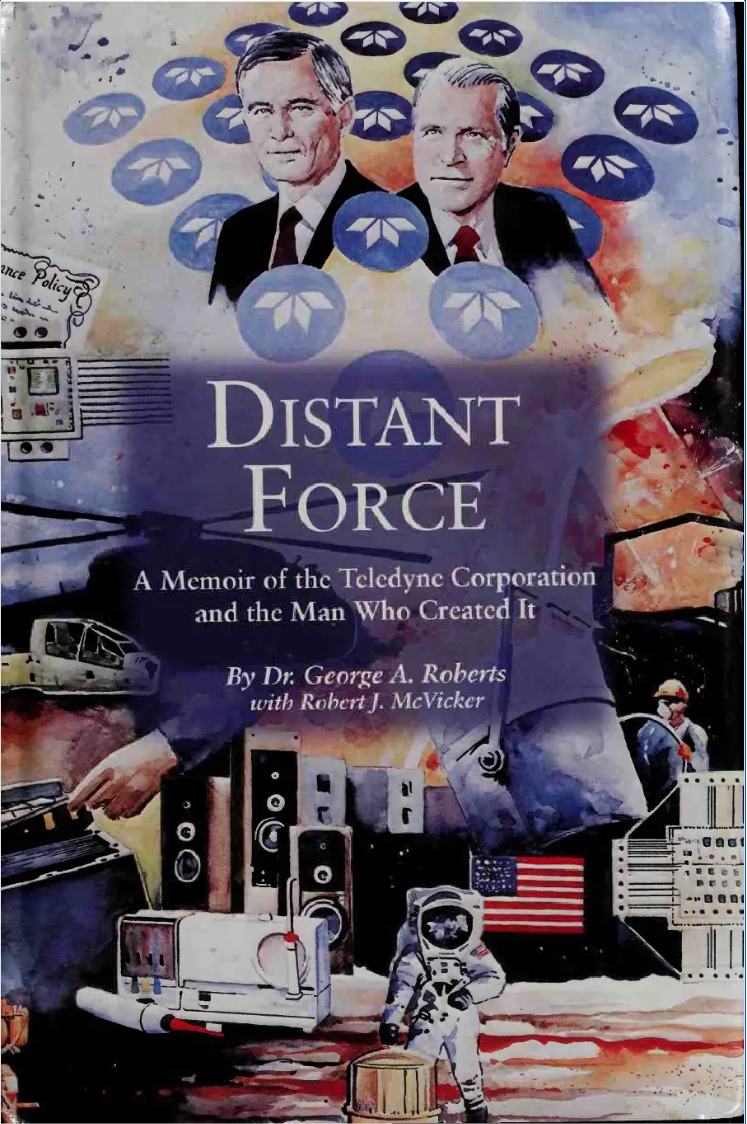Pinned
May 16, 2024
Takeaways from Henry Singleton’s Journey to Build a Conglomerate
I finished reading Distant Force: A Memoir of the Teledyne Corporation and the Man Who Created It. The book didn’t give me as much detail about Henry Singleton’s struggles as a founder as a biography would have. But it did provide details of strategies that made him a great master capital allocator and entrepreneur and that made Teledyne successful during his tenure as CEO.
Here are a few things about Singleton that stood out to me:
- Age – Singleton didn’t found Teledyne until he was 43.
- Missionary founder – From the start, Singleton was very clear about what he wanted to build. When asked, he replied, “I’m trying to create another GE.” Singleton was solely focused on creating a conglomerate that rivaled General Electric. That mission informed his decision-making over the next thirty years.
- Growing market – Singleton recognized the importance of semiconductors when the technology was still new and unknown. Because of the growth potential of the semiconductor market, he made it the base of Teledyne. In Teledyne’s early days, he bought small companies with growth potential in the semiconductor space. As the semiconductor market grew, Teledyne’s market grew rapidly, too.
- Cloning – Singleton knew that a lot could be learned from others. He was open to borrowing ideas. His foray into insurance was borrowed from a book written by GM’s chairman. The chairman learned, through a painful experience involving failed financing, that a growing public company with a strong financial base needs an internal finance company. Singleton borrowed this idea and expanded by building a massive insurance operation. Years later, Warren Buffett apparently borrowed from Singleton’s insurance playbook for Berkshire Hathaway.
- Zigzagging – Singleton was a first-principles, independent thinker. He was flexible in his thinking and execution. As market conditions changed, so did his thinking and strategy. He quickly adapted to new realities and often took actions others considered abnormal. For example, when the P/E multiple of Teledyne’s stock went from a range of thirty to seventy times earnings (overvalued) in the 1960s to roughly nine times earnings (undervalued) in the ’70s and ’80s, he stopped acquiring companies with Teledyne stock beginning in 1969. He began aggressively repurchasing shares in the ’70s and ’80s. This was unheard of at the time, but eventually it was mimicked.
- Twin tailwinds – Singleton recognized and took advantage of two simultaneous forces. More details on this here.
- Cash flow and profits – Singleton focused on making sure revenue was profitable and that customers were paying promptly. He created a metric to measure this consistently across Teledyne’s hundreds of operating companies. More detail on this here.
I enjoyed learning about Singleton and Teledyne. I’m glad I was able to locate a copy of this hard-to-find book.
You can listen to audio versions of my blog posts on Apple here and Spotify here.
Connected Entrepreneurs
No items found.
Connected Books




